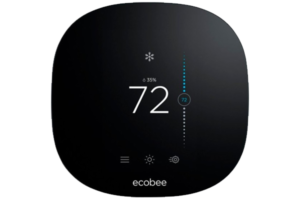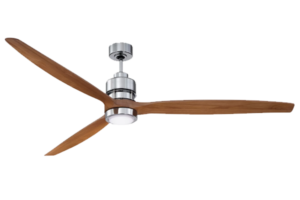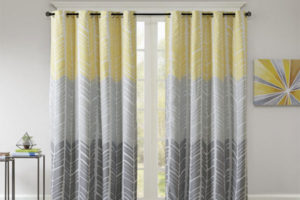
Summer energy bills skyrocket just like fireworks when it’s steaming hot outside.
Here’s a list of five cost-saving methods to help you declare independence from high energy costs.
+1F:-3%
It’s a simple ratio. For each 1F increment above 72F, you save about 3% on your cooling expenses.
Now, we’re not math geniuses, but if your monthly energy bill is $250 and you increase your thermostat from 72F to 75F, you’ll save about $22 (3F is 9% x $250 = $22.50) each month during the summer.
If you have a programmable thermostat, make sure to set the schedule to increase the trigger temperature when you’re not at home.
Your Thermostat is Smart, Let it Do the Work!
If programmable thermostats are cooler (pun intended), smart thermostats are cooler yet!

Smart thermostats learn from your behaviors, allow you to control the climate in your home remotely, show energy consumption in real time, and can even adjust based on ambient conditions like humidity.
You can manage your thermostat from your mobile device, while always having fingertip access to how much you’re spending on heating or cooling. You can tweak your settings to save money and see the results immediately – or you can trust your thermostat to tweak itself.
Depending on make, model, and features, smart thermostats cost about $200 to $300 – most analyses demonstrate payback within a year or two.
We recommend this smart thermostat by Google Nest for under $200!
Let There Be LED Light
OK, so this isn’t really a summer thing – LED lights save energy costs all year round.
The old myth about LED lights is that they’re a lot more expensive, right? Wrong! LED lights actually are a lot cheaper – about 1/10th the cost of incandescent bulbs. Here’s why LED lights are cheaper: i) energy consumption is about 1/3 the cost of an incandescent bulb and ii) LED lights last about 25x longer than incandescent bulbs. Here’s the break-down: 1,000 hours for an incandescent bulb = 25,000 hours for an LED bulb.
There are tons of LED lights to choose from, but we recommend these SYLVANIA ECO LED Bulbs.
If you buy WiFi-enabled LED lights, you’ll save money and have a lot more fun! Typically these include personalized settings such as dimming controls, various colors, and some can even play music. All of them are controlled via your mobile phone or voice (“Alexa, turn on the kitchen light.”). Once you’ve tried your first WiFi LED, you’ll never think of buying incandescent again.
Happiness is a Cool Fan

We’re not pulling your chain when we tell you that ceiling fans can help to reduce your energy costs, especially helpful in homes with high ceilings. Some fans have remote controls and other fans are WiFi enabled (“Alexa, turn on the fan.”).
Almost all ceiling fans are reversible, i.e., one direction (down) is appropriate for summer while the other direction (up) is appropriate for winter. Fans also are helpful for creating the “white noise” that many of us require in order to have even the most remote chance of falling asleep. Many older homes also have whole house fans, which are effective in providing a breeze by turning on the fan and opening doors and windows in the room to be cooled.
Block Sunlight!
Though we all love to take advantage of a nice sunny day and let the natural light in, sunlight is not helpful if you’re trying to cool your house. The more sunlight, the higher your energy costs.
During the warmer months it’s important to find a way to keep out the sun during summer, especially in the rooms which are facing south.
- Blinds – Pull them. That’s easy enough, right? We agree you may not always want to have your blinds closed and want to let in the light. Consider closing the blinds in rooms you are not using and open as needed.

Thermal drapes are pretty, aren’t they? - Thermal drapes – Thermal drapes come in all colors and varieties and look like regular window coverings, but they’re insulated and help to reduce sunlight. We recommend these NICETOWN Drapes for a great variety in many sizes and colors.
- Trees and shrubs – Strategically planted trees and shrubs can help to block sunlight.
Window AC Units
Along with your refrigerator, your central HVAC system is the largest consumer of energy in your home. If you find that you’re spending time in only two or three rooms in your home, what’s the point of cooling your entire house?
Augmenting or avoiding a central HVAC system with a window unit can dramatically reduce your electricity consumption and summer energy costs.
It’s pretty simple to find the right window unit: i) measure your room’s square footage (length x width), ii) shop for units which match your room’s square footage, and iii) select a window unit with a high SEER (seasonal energy efficiency ratio). We recommend this window unit.
*As an Amazon Affiliate, we earn from qualifying purchases.
